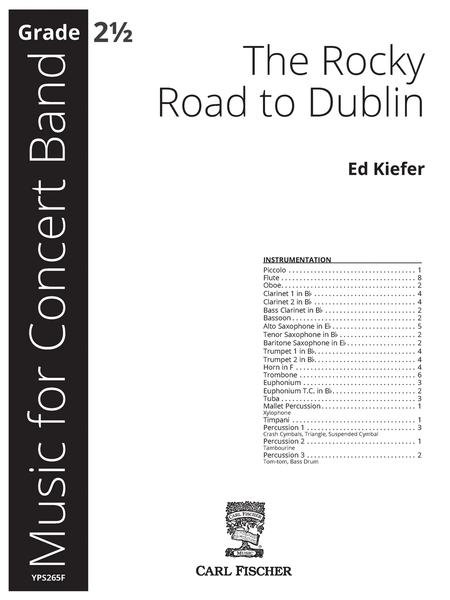The Rocky Road to Dublin
-
Ships in 1 to 2 weeks
Details
Description
SKU: CF.YPS265F
Composed by Ed Kiefer. Full score. Carl Fischer Music #YPS265F. Published by Carl Fischer Music (CF.YPS265F).ISBN 9781491164051. UPC: 680160922840.
The Rocky Road to Dublin is a song written by Irish poet D. K. Gavan in the mid-nineteenth century for English music-hall performer Harry Clifton and tells the story of an Irish man leaving his hometown of Tuam in the county of Galway in Ireland to go to Dublin to make money. Because of the Great Potato Famine at that time, large groups of Irish folks left their hometowns looking for food and work. Thousands ended up in America, in particular, Philadelphia, where many made their way south through the Appalachian mountains, settling in southwest Virginia, western North Carolina and eastern Tennessee. As the Irish began their new lives here in America, they would often sing these songs, which would bring back fond memories of their homeland. Many old-time fiddle tunes can be traced to Irish music, including this song. However, their music changed as the songs were passed around through other cultures in the mountains, with new verses about their new lives. Often the tunes and lyrics made their way back overseas where they would change yet again, so there are many versions of these songs found in both Ireland and America. This setting is close to the original and can be found in both places. It gets to the heart of having to leave one’s home to seek a better life.This tune is a fun one and should be played with a lilt until m. 43. At this point, the original material is more legato, but returns at m. 59 in the alto saxophone. Let the percussion play on their solis, especially at the end where some of them answer the band motifs. The straight eighth notes (as at m. 29) will perhaps look difficult to younger players, but once they understand the concept, it will be a favorite part. Have fun!

 Share
Share